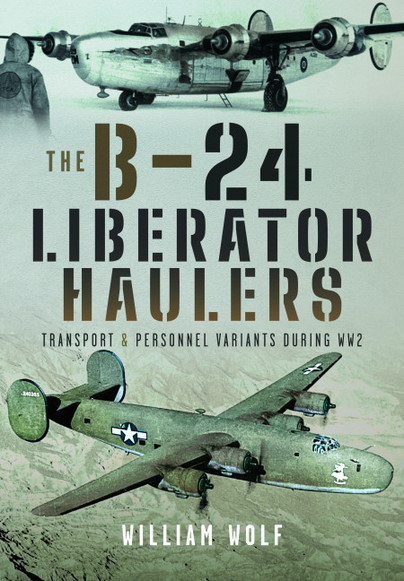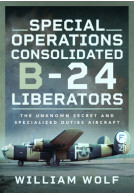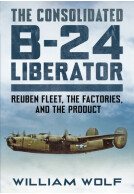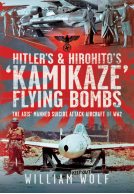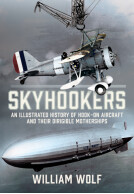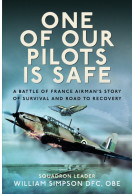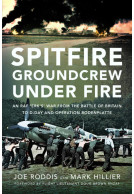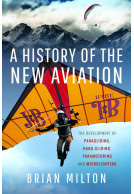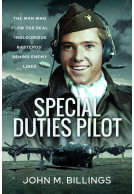The B-24 Liberator Haulers (Hardback)
Transport and Personnel Variants During WW2
By
William Wolf
Imprint: Air World
Pages: 296
Illustrations: 200 mono illustrations
ISBN: 9781399031615
Published: 9th July 2024
Imprint: Air World
Pages: 296
Illustrations: 200 mono illustrations
ISBN: 9781399031615
Published: 9th July 2024
You'll be £17.50 closer to your next £10.00 credit when you purchase The B-24 Liberator Haulers. What's this?
+£4.99 UK Delivery or free UK delivery if order is over £40
(click here for international delivery rates)
Need a currency converter? Check XE.com for live rates
(click here for international delivery rates)
Need a currency converter? Check XE.com for live rates
| Other formats available - Buy the Hardback and get the eBook for £1.99! | Price |
|---|---|
| The B-24 Liberator Haulers eBook (25.2 MB) Add to Basket | £6.99 |
With iconic images depicting it in the skies over Occupied Europe or the Far East, the B-24 Liberator is remembered for its part in the Allies’ bombing campaigns during the Second World War. But there was another part to this famous four-engine aircraft – one that is less well known.
While the Douglas C-47 Dakota is deservedly celebrated as the most important twin-engine transport aircraft of the war, the early use of the four-engine Consolidated B-24 Liberator bomber as a passenger carrier is virtually unknown but was as important. Since the B-24 had more interior room than the B-17, it could be more easily be converted into a personnel carrier.
These early Liberators operated America’s and Britain’s early diplomatic missions and then were to be extensively flown by the Atlantic Ferry Organization and the Transport Commands on missions that opened the world to air transport as never before. Several B-24s were converted for VIP personal and diplomatic use, which included Harriman’s Moscow and round-the-world diplomatic mission, and those used by Churchill and Eisenhower to ‘get around’.
To meet the need for a cargo and personnel transport which had longer transoceanic range and improved high-altitude performance than the C-47, in early 1942 the C-87, a hastily designed B-24 derivative, was placed into production. By installing a built-up floor section that replaced the bomb bay doors, the C-87 could carry six tons of cargo loaded through a cargo door cut into the side of its fuselage or through a special hinged door in its nose.
Most C-87s were operated by the US Ferrying Command and Air Transport Command; by the late summer of 1943, they were extensively operating regular routes from the United States to the world’s most remote areas. To meet this increased requirement for air transport, the ATC was forced to turn to four civil commercial airlines for help operating the system. Of the 287 purpose-built C-87s, 24 were transferred to the RAF under Lend-Lease for RAF Ferry and Transport Command. The C-87 would remain as a prime mover until the dedicated C-54 Skymaster four-engine transport came into service.
The 218 C-109s were fuel tanker conversions of completed B-24 bombers which had all armament removed and extra fuel tanks added to carry fuel from India for B-29s based in China.
Due to the lack of C-47s after D-Day, conventional B-24s were again converted for transporting vital supplies and bulk fuel to troops in France. Once Allied troops broke out of the Normandy beachhead, converted Liberators flew Trucking supply drop operations delivering emergency fuel and supplies to Patton’s fuel-starved armies racing across France. Later these B-24s supplied the ill-fated Operation Market Garden at Arnhem.
“… for the story of the early development of US military air transport and the Liberators that were its backbone, nobody has provided anything to match this book.”
The Journal of the Air Force Historical Foundation - Spring 2025
About William Wolf
Dr WILLIAM WOLF was a dentist for twenty-two years before retiring at the age of 45 to pursue his aviation interests and outdoor pastimes. Over the past forty-five years he has amassed an archive of over 27,000 books and magazines, 10,000 or more images, and hundreds of reels of microfilm, among other material, on the subject. He is the author of twenty-four books on aerial warfare in the Second World War, including nine on American bombers, two on US fighters, five on American flying units, and three volumes on US aerial armament.
More titles by William Wolf
Other titles in Air World...







